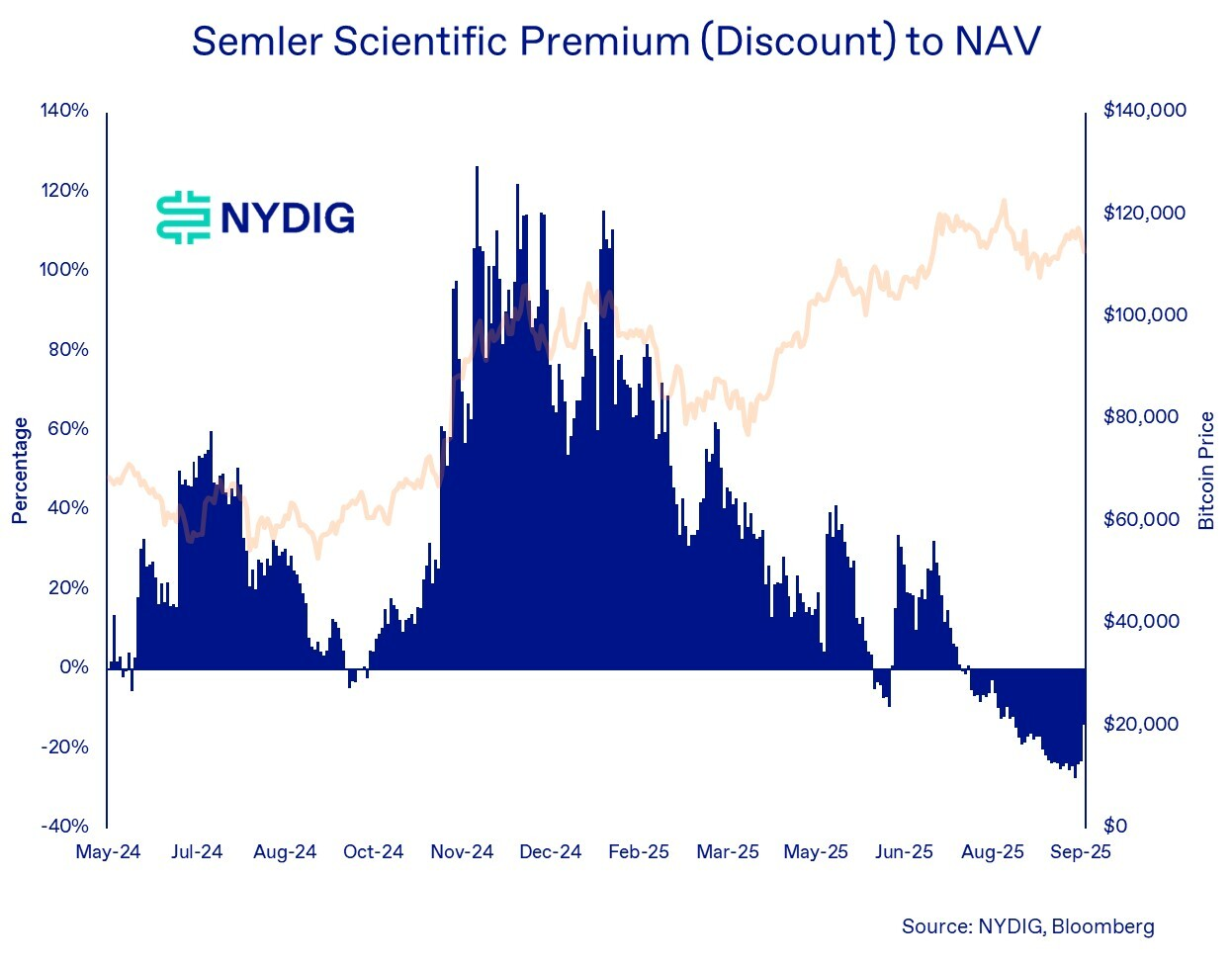mNAV is a market-cap-to-net-asset-value metric that NYDIG’s Greg Cipolaro says should be retired because it misleads investors by ignoring operating assets and convertible debt. Relying on mNAV can distort NAV-per-share and understate liabilities for crypto treasury companies.
-
mNAV often misstates value by excluding non-crypto operations and convertible debt.
-
Convertible instruments are frequently treated as equity in mNAV, masking real cash liabilities and dilutive risk.
-
Strive’s NAV/share was $1.14 pre-merger; merged NAV/share estimated at $1.32 and Semler shareholders received 21.05 Strive shares per Semler share.
mNAV misleads investors — NYDIG’s Greg Cipolaro urges retiring the metric; read how it ignores operations and convertible debt and what to watch in treasury mergers.
NYDIG’s Greg Cipolaro argues that a popular metric for valuing crypto companies should be retired as it misleads investors.
What is mNAV and why should it be retired?
mNAV (market cap to net asset value) is a ratio comparing a firm’s market capitalization to the value of its crypto holdings. NYDIG’s Greg Cipolaro recommends retiring mNAV because it omits operating assets and treats convertible debt as assumed equity, creating a misleading picture of firm value and liabilities.
How does mNAV mislead investors?
mNAV commonly assumes shares outstanding and values only digital assets versus market cap. That approach:
-
Ignores non-crypto business lines and operational revenue that add real value.
-
Often treats convertible debt as equity, which can materially understate cash obligations and dilution.
-
Can present treasury firms trading at a superficial discount or premium that does not reflect economic reality.
Greg Cipolaro, global head of research at NYDIG, wrote that the industry definition of mNAV needs to be “deleted and forgotten.” He argues NAV is the decisive metric for evaluating digital asset treasuries, not market cap.
Why does convertible debt matter for crypto treasury valuation?
Convertible debt is often included in “assumed shares outstanding” used by mNAV. Accounting for such instruments automatically as equity is misleading. Convertible holders may demand cash rather than shares, creating a liability that mNAV does not capture.
Removing convertible debt from a pure mNAV calculation reveals higher effective leverage and potential dilution. Cipolaro labels the conventional treatment “not correct from an accounting or economic perspective.”

When can premium to NAV be justified?
Premiums above NAV can be justified when a crypto treasury company demonstrates sustainable yield generation or profitable operating businesses outside of crypto holdings. In such cases, equity can rightfully trade at a premium to NAV per share.
Cipolaro notes that if a treasury firm creates yield or maintains profitable operations, it can issue equity at a premium to NAV — but mNAV alone will not capture that nuance.
How did the Strive–Semler deal illustrate mNAV limits?
Strive Inc.’s acquisition of Semler Scientific was the first instance of one crypto treasury company buying another. Under the deal, Semler shareholders received 21.05 Strive shares per Semler share. Strive’s NAV/share was reported at $1.14 before the announcement; the merged entity’s NAV/share is estimated at about $1.32.
While the merger appears to “work out for both” according to Cipolaro, he cautions that predicting future trading levels depends on investor-applied premium or discount to NAV, not on mNAV metrics alone.
Frequently Asked Questions
Is mNAV the same as NAV?
mNAV compares market cap to crypto holdings; NAV measures net asset value including all assets and liabilities. NAV is a more comprehensive metric for crypto treasury firms because it accounts for non-crypto operations and debt.
How should investors assess crypto treasury companies instead of using mNAV?
Use NAV per share, adjust for convertible debt and realistic share counts, evaluate operating revenue and yield generation, and stress-test liquidity under crypto volatility scenarios.
Will regulators change reporting standards for treasury metrics?
There is growing industry debate and calls from analysts for clearer accounting of convertible instruments and operational assets, but regulatory changes would depend on accounting bodies and securities regulators over time.
Key Takeaways
- mNAV is flawed: It omits operating assets and miscounts convertible debt, producing misleading valuations.
- NAV matters more: NAV per share, adjusted for liabilities and realistic share counts, gives a truer picture.
- Do due diligence: Investors should evaluate yield potential, non-crypto operations, and convertible instruments before relying on headline ratios.
Conclusion
NYDIG’s Greg Cipolaro argues that mNAV should be retired because it misrepresents value by ignoring operating businesses and treating convertible debt as assumed equity. Investors and analysts should prioritize adjusted NAV-per-share, explicit treatment of liabilities, and yield-generation metrics when valuing crypto treasury firms. Monitor merger terms and convertible instruments closely to avoid valuation blind spots.
